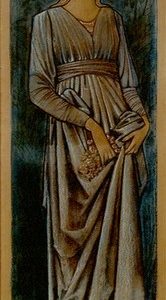It was 95 degrees outside. I had just finished digging a hole for a mailbox in the rocky Virginian clay by the side of a parking lot. As I was bending over the hole, pouring concrete into it, a thought came to me: this isn’t what I was expecting.
When I
took the job as Head of School at Cardinal Newman Academy a few months ago, I
didn’t know it would involve moving pianos (not a joke) and installing
mailboxes. But I also can’t say that I’m too surprised. The school is still in
its infancy and we just moved locations. The Head of a small independent
Catholic School is obliged to wear many hats. That just comes with the territory
and I am happy to do what it takes in order to offer an authentic Catholic
education to the young men and women under my charge.
When I am not busy with manual labor, I am also doing some preparation work of an intellectual nature. The patron for our school is Blessed (soon to be Saint) John Henry Cardinal Newman. I have therefore been reading his famous work on education, The Idea of a University.
In these series of lectures, Newman makes many sensible claims concerning the nature of a true education. Among these is his statement that one is not truly educated unless one have a sense of the whole. “That only is true enlargement of mind which is the power of viewing many things at once as one whole, of referencing them severally to their true place in the universal system, of understanding their respective values, and determining their mutual dependence.” It is not enough to know something, or even much, about this or that topic, or even about many and various topics if you are unable to relate these disciplines to each other.
If at the end of your education, you have accumulated knowledge about a good many things, but these things form an unconnected archipelago of isolated islands, you have not gained an education. If, however, the various islands of your knowledge are interconnected by many bridges, you have what Newman calls a philosophical state of mind, which is the characteristic mark of the educated man.
In this
view, Newman echoes ancient philosophers such as Aristotle who held that wisdom
lay in the connections: in the ability to see how seemingly disparate things
relate to each other. The wise man is he who has a grasp of the whole and who
is therefore able to assimilate any new truth into his existent framework.
Without this framework, argues Newman, people are at the mercy of emotional
rhetoric and popular feeling. They are not able to work out difficulties on
their own. They lack the tools necessary to figure out their place in the
world. They do not recognize the truth. And education, after all, is about the
truth. The truth is the proper object of the intellect, and all truths are
reflections of the one Truth. All knowledge is ultimately about one Subject.
This is why the connections are so vital to wisdom.
The big
picture for which one should strive, will be akin to the image given to us by
Dante at the end of his Divine Comedy. Dante beholds the Divine center blazing
with a brilliant light that he can only see having been granted a power of
vision beyond the lot of earth-bound men. Around this center orbit the angels
and the saints.
I’d seen the general form of Paradise –
my gaze had grasped the pattern of the whole
without yet fixing on a certain place,And I turned with a fresh fire in the soul
To ask my Lady of those things I see
That hold my intellect in some suspense.(Paradise, Canto 31, lines 52-57)
In my
analogy, the angels and saints represent the correct objects of the particular
sciences and disciplines. They can be individually studied, and that to a good
purpose, but without the light at the center they lose their meaning and their
true significance. Indeed, they would not even be visible at all but for the
life-giving light. The whole cosmology must be at least partially grasped to
know what to make of the parts, for the parts form a beautiful and ordered
whole. This whole is what the good educator strives to show his students and
this is what Newman considered to be of the utmost importance in the mission of
a University.
But I do not run a University, I run a high school. What does this look like in a high school classroom? I had a wonderful example of that today. I was speaking with a man who will be teaching a woodworking class to my students. That seems straightforward enough: the students will get the valuable experience of working with the stuff of this world and shaping it into something useful and, hopefully, beautiful. But if one has this vision of the whole, it can go further.
The woodworking teacher told me how he also wanted the students to read for his class. Between classes the students would be assigned passages from, among others, Pope Saint John Paul II and Saint Benedict in which they speak about the sanctity of work and the innate desire in man to be, albeit in a small way, co-creators with God. The teacher wanted the students to see how woodworking fulfills a deep and holy desire in man to take the “good” creation of God and offer it back to Him, re-fashioned and made beautiful through the use of his hands coupled with his unique gift of reason.
Woodworking class is now examining the nature of mankind and how he is supposed to relate to the rest of the physical creation. This is a beautiful and profound plan for integrating a woodworking class into this bigger picture, and doing it in a way accessible to high school students. They will still make tables and shelves but the whole tone of the class has been elevated. Bridges have been built.
The more
a teacher is able to make these connections for his students, the more of a
holistic view he gives them. Teachers should consciously try to
impart this idea of the bigger picture while teaching whatever part of it they
are assigned. It is good for the students to contemplate the mysterious order
in creation in a Geometry class. It is good for them to admire a
beautifully-crafted sentence in a history book. It is good for them to rest in
the poetic wonder that all of the energy that powers their own bodies
ultimately comes from the sun. It is good for them to learn with their bodies
as well as their minds. We are both, after all, and not only during this
passing earthly life as Socrates thought. A holistic education is one that
integrates everything into a beautiful big picture with God at the center,
giving meaning to everything else. The rediscovering and communicating of this
whole must be a priority for any good school.
I contemplated all of this as I was sweating in the hot weather wondering if my hole was deep enough (and very much hoping that it was). Anyone who passed me might have taken me for a contractor, instead of the Head of School. What I was doing only made sense with a proper understanding of the big picture; an integrated view of the whole. My very situation was a small example illustrating the larger principle I had been reading the day before in The Idea of a University. I welcomed the reminder as I plan my own classes for the coming semester.
✠
Photo by Valdemaras D. on Unsplash












